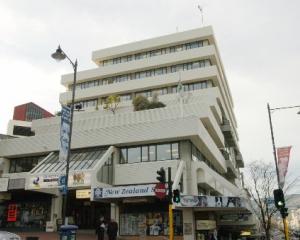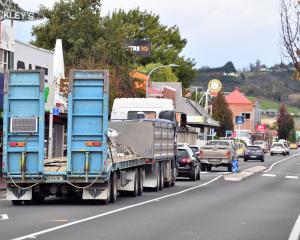But the city council says it is already working with the regional council and will continue to do so as it reviews its district plan and develops a new one that includes measures to address acknowledged shortcomings in how hazards are managed around Dunedin city.
The board this week called for the councils to collaborate on the development of the new district plan around how to appropriately address risk issues on the plains, as outlined in the regional council's report Natural Hazards on the Taieri Plain, Otago.
Regional council staff presented the report to the board at its meeting on Tuesday.
The report collates, for the first time, information about all known natural hazards on the Taieri, including floods, earthquakes, landslips, tsunamis and alluvial fans, and how they interact.
Previous assessments largely focused on the risk of floods alone.
Regional council director environmental engineering and natural hazards Dr Gavin Palmer said the report was compiled to help people better understand the risks; and to make information available when decisions were being made on land use and ways of reducing the risks from natural hazards.
It was hoped a more comprehensive hazards register, developed over the past 10 years, would soon be available online.
The information should provide more than enough detail for informed land-use decisions by the city council and in its review of its district plan, Dr Palmer said.
Given what was now known about the hazards on the Taieri, limits on development in certain areas were needed, he said.
At present, there was a gap in the district plan, which allowed development in certain areas without fully taking account of the effect it could have on displacing flood waters.
Planning for the effects of flood waters had to be dealt with at the stage of subdivision or land-use consent application, rather than leaving councils to pick up the pieces when it all went wrong, he said.
Regional council chairman Stephen Woodhead said the issue for councils was that people were happy to accept the risk when they started developing a property, but when it flooded, that all changed and they "come looking for someone to blame".
"The question is, do we make this information available and people make individual assessments of the risk involved, or do we, as regional or city councils, say no, you should not be building here?"
Cr Syd Brown said he thought that was the process already.
"If it is not, what's your advice?"
Dr Palmer said the councils needed to agree on the principles of land use in the area and rules and processes would flow from that.
Cr Brown said his fear was that the two councils would "continue to work in silos" and that the city council would simply receive the report, say thanks, but then say the problems were the regional council's to deal with.
The board needed to push the council for some commitment to a collaborative approach to dealing with the issue, he said.
City council city development manager Dr Anna Johnson said when contacted that staff from the two councils met in March to start discussions on the review of the district plan with regard to hazards.
The regional council's report, together with other hazards information, would contribute to the development of the hazards section of the new district plan.
Shortcomings had already been identified through the district plan review process with regard to how hazards were managed in Dunedin city, and these would be addressed in the new plan.
The city council looked forward to continuing to work closely with the regional council to ensure appropriate use of the land was made, and that, where necessary, areas of hazards were avoided, she said.












